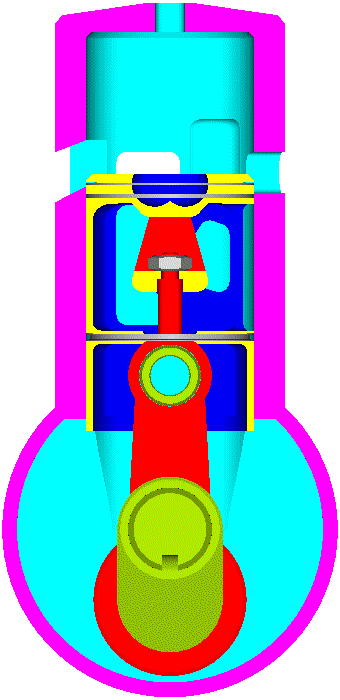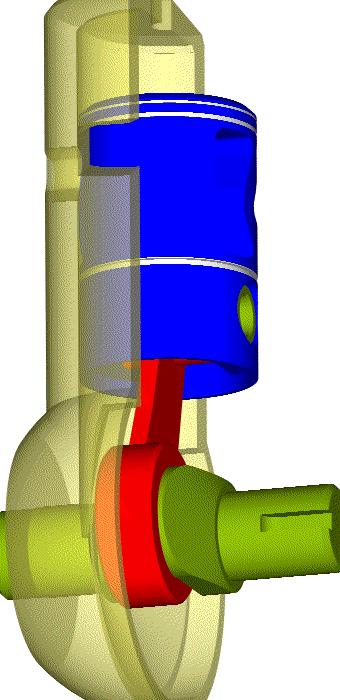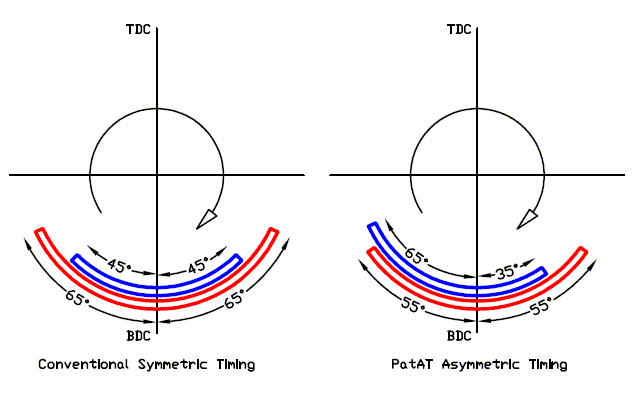With the Search and Examination Report from the UK-IPO (United Kingdom Intellectual Property Office) received, here:

and here:

is a turbocharged 2-stroke PatAT (Asymmetric Transfer) direct injection Diesel design.
The exhaust gas, by means of a turbocharger, powers the scavenging.
With the exhaust closing before the transfer, the gas pushed into the cylinder has no way to escape (more or less as in the Opposed Piston - say Junkers Jumo - supercharged or turbocharged 2-stroke Diesels).

The lubrication of the crankcase is true 4-stroke (compressed lubricant feeds the plain bearings, splash lubrication of the lower piston skirt - cylinder liner, oil scraper ring, recirculation of the lubricant).
The oil ring never passes over cylinder ports.
At the TDC the oil ring abuts and lubricates the cylinder liner area just below the ports. Then it scraps the surplus of lubricant from the cylinder liner back to the crankcase (from wherein, after it is cooled and cleaned, it feeds the oil pump again).
At the BDC the lower compression ring (or both compression rings, depending on the design) abuts on the abovementioned area of the cylinder liner moving over the lubricant film left by the oil ring 180 crankshaft degrees earlier (worth to mention: the required oil film for the lubrication of the compression rings is a few times thinner than the oil film required between the piston skirt and the cylinder liner).
How it operates?
The exhaust port is the opening at the left side of the cylinder.
There are three conventional transfer ports (the one at the right side of the cylinder).
There are two asymmetric transfer ports (passageways at the sides of the cylinder allowing the communication of the space into the cylinder with the space under the piston crown when the connecting rod permits it).
The compressed air from the turbocharger (or from a supercharger) passes - through the three transfer ports - into the cylinder and pushes the burned gas out to the exhaust.
While these three transfer ports close before the exhaust port, the two asymmetric transfer ports are already open feeding the space into the cylinder with compressed air from the space under the piston crown (which is sealed from the crankcase, and which is fed by the three abovementioned transfer ports).
The exhaust port closes, but the asymmetric transfer ports keep feeding the space into the cylinder with compressed air.
Finally the asymmetric ports close and the compression begins.
The moving parts are as many as in the simplest two-strokes.
The manufacturing and the assembly is easy (for instance: the flat surfaces on the piston wherein the extension of the connecting rod abuts, opening and closing the asymmetric transfer ports, are easy to cut).
For extreme power to weight ratio and top vibration-free quality, the Cross-Radial combines four cylinders like the above with a single crankpin (more at http://www.pattakon....ttakonPatAT.htm )
Objections?
Opinions?
Thanks
Manolis Pattakos
Edited by manolis, 10 December 2015 - 10:01.












